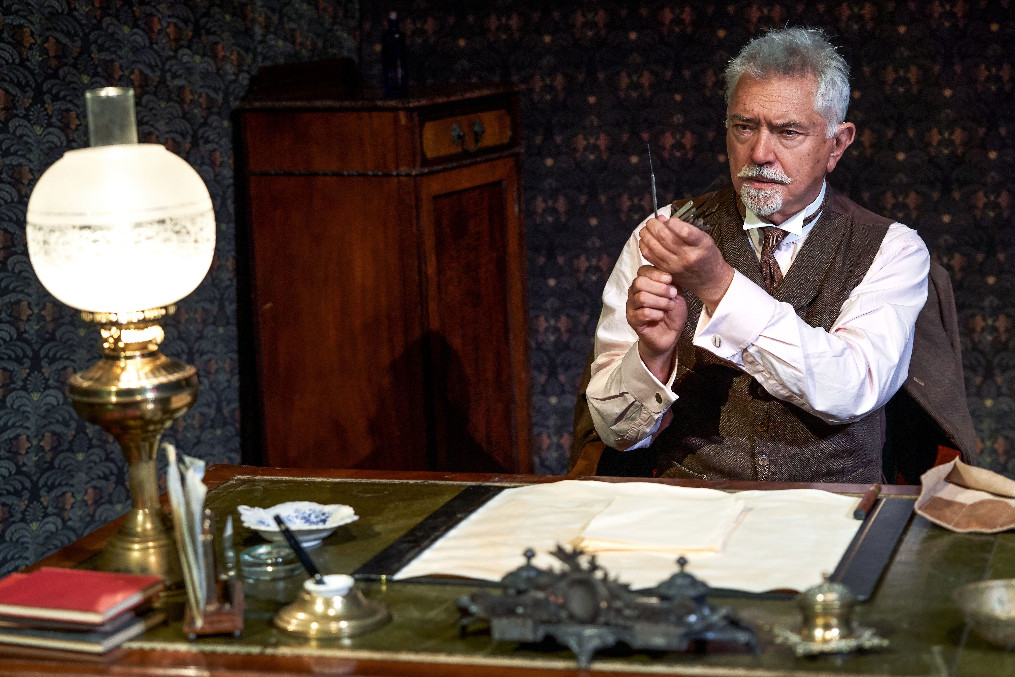
James Wilby as the dastardly Jack Manningham and Charlotte Emmerson as his young mentally distressed wife Bella reprise Patrick Hamilton’s subtle and slow-burning murder mystery. Hot on the trail of the wrongdoer, Martin Shaw stars as retired Inspector Rough.
The action all takes place in the living room at 9 Thornton Square, London. Here the controlling master of the house enacts his preconceived plan to drive his dutiful and loving wife into a state of mental instability, the better to gain unfettered access to riches he knows lie somewhere within the property. Wilby ratchets up Manningham’s nastiness as the evening develops, finally revealing a man hot with malignant ambition and self-absorption.
Emmerson conveys a real sense of the fragility in Bella Manningham’s desperation to please her husband and her fear that he might commit her to the madhouse or possibly worse. Why Shaw elected to play the inspector with a quiet, sometimes groggy southern Irish accent is something of a mystery in itself – quietly-spoken guttural lines could easily be lost, especially at the back of the auditorium. But he did bring benevolent passion into Rough’s desire to solve an old riddle.
Directed by Lucy Bailey, the play builds the tension well as the inspector explains the danger Bella is in. There is a race to uncover the house’s secrets while the master of the house is out. Gas lamps dim ominously while Bella’s mind hinges on unravelling. With see-through walls we get a sense of eaves-dropping servants outside and the forbidding staircase leading to the top floor of the house, which is always locked.
Mary Chater as the straight-batting servant Elizabeth and Georgia Clarke-Day as the young opportunist maid, Nancy, seizing her moment convincingly with her dishonourable employer, both add livid illustration of life under Victorian patriarchy.
Manningham’s mental torture of Bella has clearly been going on for some time as the play begins. Her husband’s mean tricks and his power of attorney over her combine to give Bella grave doubts about her mental stability as her protestations become feebler.
The film version of the story starring Bergman and Boyer undoubtedly benefitted greatly from closeup shots of the actors’ faces. Here we had to rely more on body language to convey sentiment and in this Emmerson exceeded as the tortured wife, often clinging and pleading to her deaf-eared husband, slumping in depression at her lack of capacity. Starting with a stern Victorian exterior, Wilby’s Manningham, stripped of patience, grew evermore threatening.
Designer William Dudley’s costumes worked well, with Manningham’s tight waistcoat and starched collars matching his repressed character, a foil to Bella’s flowing full-length bottle green dress. The set is given extreme perspective while video sequences, played above to illustrate the upper reaches of the house and the criminal’s fate, look overworked and exaggerated. The staging worked well other than during a disjointed and hammy portrayal of Manningham’s original crime.
Despite this, Bailey’s direction provided compelling story-telling. And Hamilton’s observations of mental abuse remain potent. ★★★☆☆ Simon Bishop 15th October 2019
Photo by Paul Coltas

